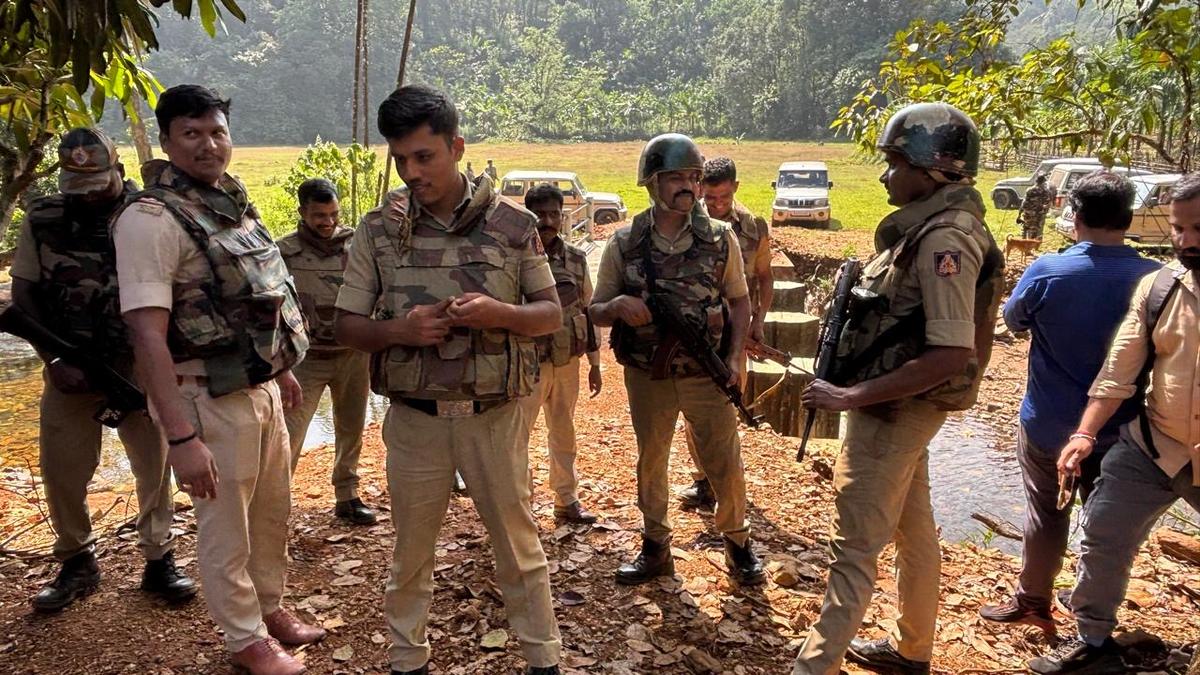 |
|
The death of Maoist leader Vikram Gowda in a police encounter on November 19, 2024, has sparked debate and raised questions about the circumstances surrounding the incident. According to the official police report filed by DySP Raghavendra R. Naik of the Anti-Naxal Force (ANF) Karkala Unit, the encounter unfolded as a result of a pre-planned ambush. The ANF had received a tip-off indicating that Gowda and other Maoist members would be visiting several houses in the Peetabailu area of Nadpalu village. This intelligence, reportedly stemming from a Maoist interaction with a villager involving a payment of ₹400 and a threat, prompted the ANF to establish an ambush position in the surrounding forest from 5 p.m. on November 18.
The police statement details the events of the encounter. Around 6 p.m., Gowda and two to three others were observed approaching the area, armed with firearms. The ANF officers, according to their account, identified themselves as police and ordered the Maoists to surrender. However, instead of complying, the Maoists allegedly shouted pro-Maoist slogans and opened fire. The ANF officers claim they returned fire in self-defense, resulting in Gowda being fatally wounded. The other Maoists escaped into the forest despite a subsequent pursuit by the ANF. A 9mm carbine was recovered from the scene near Gowda's body. The police claim that Gowda and his associates exhibited intent to kill, prompting the retaliatory action. The firearms used by the ANF included AR rifles, AK rifles, and Excalibur rifles, all semi-automatic assault weapons.
The narrative presented by the police raises several crucial questions that require thorough investigation. The claim of self-defense is central to the case, necessitating an independent and impartial inquiry. The reliability and accuracy of the tip-off that served as the basis for the ambush need careful scrutiny. The absence of independent witnesses to the event raises concerns about potential biases and inaccuracies in the police account. While the police have registered a case against Gowda and unidentified others under the Unlawful Activities (Prevention) Act, 1967, Arms Act, 1959, and sections of the Bharatiya Nyaya Sanhita, 2023, a comprehensive investigation is vital to establish the precise sequence of events, the legitimacy of the police action, and the accuracy of the claims made in the official report.
The residents of Peetabailu village, according to media reports, stated that the ANF evacuated three houses before the Maoists arrived. This proactive measure, while possibly intended to prevent civilian casualties, raises questions about the ANF's knowledge of the Maoists' movements and the level of planning involved in the operation. The potential for pre-emptive action, rather than solely reactive self-defense, needs to be explored. The timing of the encounter – shortly after the Maoists entered the area – suggests a meticulously planned operation, raising concerns about potential premeditation. The absence of civilian witnesses to corroborate the police account is another significant factor that requires attention.
The encounter highlights the ongoing conflict between the Indian security forces and Maoist insurgents. The incident underscores the complexities of counter-insurgency operations and the inherent difficulties in establishing the truth in such highly contested environments. The need for transparency and accountability in such situations is paramount. An independent investigation, incorporating witness testimonies, forensic evidence analysis, and a thorough examination of the ANF’s operational procedures, is crucial to determine the veracity of the police narrative and ensure justice is served. The potential for misuse of power and extrajudicial killings needs to be addressed proactively through robust investigative mechanisms and increased oversight of counter-insurgency operations.
Source: Vikram Gowda encounter killing: How Anti Naxal Force officers ambushed the Maoist leader
